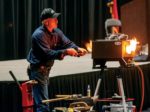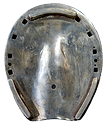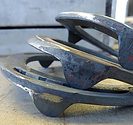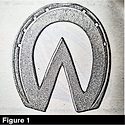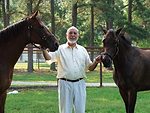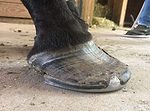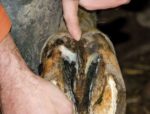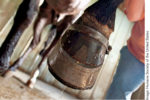Advertise Follow Us
American Farriers Journal

View Archived Issues
March 2022
Volume: 48
Edition: 2
American Farriers Journal is the “hands-on” magazine for professional farriers, equine veterinarians and horse care product and service buyers.
-
Table Of Contents
Table Of Contents
How Modifications Affect Breakover
This study examines the effects of front shoe-surface modifications in the sport horse on the speed of breakover during the walk and trot on artificial and solid surfacesRead MoreApplying the Heart-Bar Horseshoe
Therapeutic shoe can be a helpful solution in certain hoof-care cases, but a detriment if incorrectly appliedRead MoreShoeing Performance Horses for Synthetic Surfaces
Strategies to keep equine athletes sound and comfortable during competitionRead MoreIn MemoriamRemembering Henry Heymering
American Farriers Journal founder filled industry’s information voidRead MoreIn MemoriamRemembering Frank Gravlee
Equine veterinarian pioneered equine nutrition researchRead MoreHow to Identify and Rehabilitate Compromised Horses’ Feet
Resolution of therapeutic cases can be difficult due to unique variablesRead More5 Gain Entry to Horseshoeing and Equine Veterinarian Halls of Fame
Four farriers and one vet recognized for career hoof-care contributionsRead MoreHow to Prevent and Treat Thrush in Horse Hooves
Foot trimming basics can reduce the risk of anaerobic bacterial infectionsRead MoreIn the Farrier Shop: Steve Stanley and the Red Mile
Take a tour of a farrier shop and see the improvements Steve Stanley has made.Read MoreFarriers Honored as Future Equine Footcare Leaders
Trio recognized for making remarkable progress in the first 3 years after horseshoeing schoolRead MoreShoeing Jousting Horses
Jousting horses require athletic ability and for a farrier to provide ample tractionRead MoreThe Way It WasVision Comes Through Experience
Watching a Thoroughbred trot gave a young shoer a lesson about age and wisdom.Read MoreWinner of the 2022 Mail-In Forging Exercise
Jacob Butler wins the contest judged by Craig Trnka as the 2022 International Hoof-Care SummitRead MoreResearch Journal: March 2022
The information, ideas and opinions expressed are those of the author and do not necessarily represent those of the United States Department of Agriculture.Read More -
Featured Articles
Featured Articles
How Modifications Affect Breakover
This study examines the effects of front shoe-surface modifications in the sport horse on the speed of breakover during the walk and trot on artificial and solid surfacesRead MoreShoeing Performance Horses for Synthetic Surfaces
Strategies to keep equine athletes sound and comfortable during competitionRead MoreHow to Prevent and Treat Thrush in Horse Hooves
Foot trimming basics can reduce the risk of anaerobic bacterial infectionsRead More - Digital Edition
-
Online Extras
Online Extras

